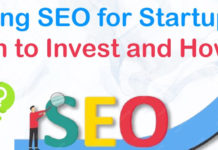Many entrepreneurs start an e-commerce business thinking it will be easy. They create the website or sign up as a seller on Amazon and just wait for the sales to pour in. If only it were that easy, then every startup would be successful.
It is necessary to formulate marketing plans and build effective strategies to generate traffic. Marketing methods are implemented to promote product listings. PPC ad campaigns can be costly but have proven to be a useful tool to bring potential customers to the listing.
However, not all paid traffic gets converted into paying customers. The time, effort and resources geared toward acquiring online traffic are wasted if visitors don’t complete checkout. Understanding what you can do to streamline sales conversions is vital to a successful online business.
Understanding conversion rates
The conversion rate is the percentage of visitors that become customers. If a site has ten thousand visitors and two hundred of those bought something from the site, then the conversion rate is 2%.
The average conversion rates for e-commerce sites are between 1% at the low end and 5% at the high end.
If the conversion rate drops below 2%, then that would indicate the need for some serious improvement. Conversions don’t always have to be about sales. A conversion event is when a call to action is completed by the customer.
Signing up for a newsletter, registering on the site, downloading freebies, accepting coupons and providing an email are some examples of trackable conversions.
Any completed action by a customer which can be tracked by the site’s analytics can be considered a conversion event. These conversion events with proper nurturing can then lead to future sales.
Site speed
Fast page loading speed is crucial for any e-commerce site. Online shoppers don’t like wasting time on slow websites. They are somewhat spoiled and would rarely wait for a slow website to load its product pages. Customers would most likely exit the site and find another site to shop on.
Google provides PageSpeed Insights to analyse and help optimise a web page load time. If the site is powered by WordPress you can install plugins that can help speed up page load times as well. Customers want instant gratification and fast page load times provide that to customers.
Optimise the site for searchability
Make it easy for customers to find what they are looking for by optimising your product listings. Do this on all marketplaces that your companies products are posted. There are several methods to simplify the search process for customers depending on the marketplace.
For example, Amazon listing optimisation is a specific way to make it easy for customers to find the products they need on the popular selling platform. You can also set up a natural search feature on your own ecommerce site. Design the website to be user-friendly and easy to navigate as well. If optimised properly, customers that search for a product will chance upon the optimised site and may make a purchase if they find the product they are looking for right away.
A/B testing
The art of online sales depends on many factors. Customers may not respond well to specific designs or product photos, so it is essential to test different options on the site. Some changes will instantly click with customers, which would then translate to more sales conversions.
A/B testing otherwise known as split testing is an advantageous method to continuously improve KPI(Key Performance Indicators) and sales conversions as well. The best thing to do is to be meticulous and test everything.
The slightest tweak can become a significant boost in sales. Split testing can also be used to test the effectivity of PPC campaigns and landing pages shared throughout social media.
Chat support
Shopping online can sometimes be confusing for customers. Live chat support can be beneficial for customers that need help.
They may be struggling with your site, or they could just be in a hurry and chat support can quickly answer their questions and direct them to the correct product that they are looking for. Live chat support will only be useful if the chat reps reply promptly to inquiries made by the customer.
Customers will lose patience if the chat rep takes too long to respond. Instead of helping convert the lead, the long wait time could annoy the customer, and they could shop elsewhere. Live chat would be cost-effective only if the site is experiencing heavy traffic.
For startup sites or sites that need to cut costs, chatbots can act as an automated business system that can boost sales as well.
Highlight good reviews
Veteran online shoppers enjoy reading product reviews before making a purchase. They like reading fellow shoppers experiences with the seller or the product, it gives shoppers an idea of what to expect. Showcasing the good reviews on the site is akin to a commercial on TV.
About 70% of online shoppers read reviews, and most are on the lookout for products that have the best reviews. Highlighting customer reviews have been proven to increase sales conversion by 50%.
Customer look for validation that they are making the correct purchase, sharing real good reviews on the site, in social media or discount coupons do just that.
Abandoned shopping cart reminders
For the customer that got away and abandoned their shopping carts, don’t let them go so smoothly. These customers have already added the products to their cart but for some reason abandoned it.
They could have lost internet connection, got distracted by Instagram or checked out the competition. Whatever the case may be, reaching out to them and sending them a friendly reminder about their shopping cart may be all it takes to convert that almost into a sale.
Most e-commerce platforms such as Shopify or Volusion have built in abandoned cart recovery systems. Sites built via WordPress also have downloadable plugins that can send customers reminders about their shopping cart.
Conclusion
An e-commerce business needs to evolve and stay ahead of the competition. Invest the time and set up tools to optimise the site to maximise conversion rates. Faster page loading speeds, streamlined listings, continuous testing, highlighting good reviews and reminding customers of their almost completed shopping experience are some of the best ways to stay ahead of the pack.




































